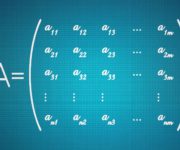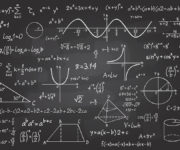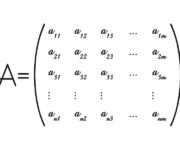Author Archive
Understanding the Change of Basis Matrix
On November 27, 2020 In Linear Algebra, Mathematics for Machine Learning
In this post, we learn how to construct a transformation matrix and apply it to transform vectors into another vector space. This process is also referred to as performing a change of basis. As discussed in the previous article on vector projections, a vector can be represented on a different basis than the basic
Orthogonal Matrix: Definition and Example
On November 26, 2020 In Linear Algebra, Mathematics for Machine Learning
In this post, we introduce orthonormal bases, orthogonal matrices and discuss their properties. An orthogonal matrix is a square matrix whose rows and columns are vectors that are orthogonal to each other and of unit length. We can also say that they form an orthonormal basis. Orthonormal Basis A set of vectors V =
What is a Transpose Matrix
On November 26, 2020 In Linear Algebra, Mathematics for Machine Learning
In this short post, we learn how to obtain the transpose of a matrix and how to perform operations with a matrix transpose. The transpose of a matrix is a matrix that is obtained by flipping the original matrix over its diagonal. In other words, the rows of a matrix become the columns of
Identity Matrix and Inverse Matrix
On November 25, 2020 In Linear Algebra, Mathematics for Machine Learning
We introduce the inverse matrix and the identity matrix. In addition, we learn how to solve systems of linear equations using the inverse matrix. The identity matrix is a matrix in which the diagonal entries are 1, and all other entries are zero. It is a more restrictive form of the diagonal matrix. It
What is a Diagonal Matrix
On November 25, 2020 In None
We introduce and discuss the applications and properties of the diagonal matrix, the upper triangular matrix, and the lower triangular matrix. A diagonal matrix is a square matrix in which all entries are zero, except for those on the leading diagonal. It is also called the scaling matrix because multiplication with the diagonal matrix
Gaussian Elimination and Gauss Jordan Elimination: An Introduction
On November 25, 2020 In None
We introduce Gaussian elimination and Gauss Jordan Elimination, more commonly known as the elimination method, and learn to use these methods to solve linear equations with several unknown variables. We also introduce the row echelon form of a matrix and discuss the difference between Gaussian elimination and Gauss Jordan elimination. Gaussian Elimination Method Gaussian
Understanding the Determinant of a Matrix
On November 24, 2020 In Mathematics for Machine Learning, None
We introduce the matrix determinant and its uses. Furthermore, we learn how the determinant provides us with a shortcut to finding the inverse matrix. What is the matrix determinant? The determinant is a scalar value that can be obtained from a square matrix and which can be used to find the inverse of a
How to Use the Transformation Matrix
On November 23, 2020 In None
We learn how to construct transformation matrices and how to use them to rotate, stretch or otherwise transform vectors. A transformation matrix scales, shears, rotates, moves, or otherwise transforms the default coordinate system. In the process it maps coordinates from the current coordinate system to the one that resulted out of the transformation. A
How to Perform Matrix Multiplication
On November 23, 2020 In Linear Algebra, Mathematics for Machine Learning
In this post we learn how to perform matrix multiplication and why we need to be mindful of matrix dimensions. Furthermore, we look at the properties of matrix multiplication. Matrix multiplication is an operation that consists of the element-wise multiplication of all entries in a row of the first matrix with all entries in
How to Perform Basic Matrix Operations
On November 22, 2020 In Mathematics for Machine Learning
We introduce and define matrices. Furthermore, we learn how to perform matrix addition and matrix subtraction. A matrix is simply a 2-dimensional vector. While vectors only have one dimension m, matrices have 2 dimensions m and n We say A is an matrix. As you can see, we usually denote matrices with capital letters.









